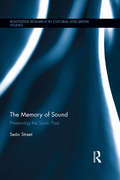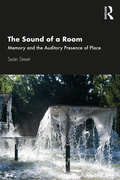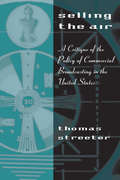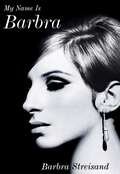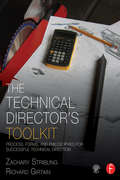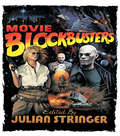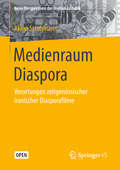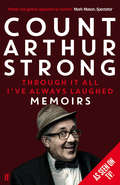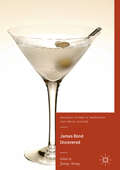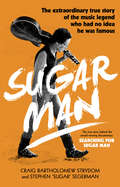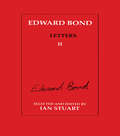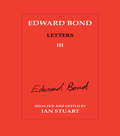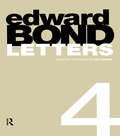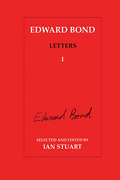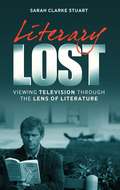- Table View
- List View
The Memory of Sound: Preserving the Sonic Past (Routledge Research in Cultural and Media Studies)
by Seán StreetThis book explores the connections between sound and memory across all electronic media, with a particular focus on radio. Street explores our capacity to remember through sound and how we can help ourselves preserve a sense of self through the continuity of memory. In so doing, he analyzes how the brain is triggered by the memory of programs, songs, and individual sounds. He then examines the growing importance of sound archives, community radio and current research using GPS technology for the history of place, as well as the potential for developing strategies to aid Alzheimer's and dementia patients through audio memory.
The Sound of a Room: Memory and the Auditory Presence of Place
by Seán StreetWhat does a place sound like – and how does the sound of place affect our perceptions, experiences, and memories? The Sound of a Room takes a poetic and philosophical approach to exploring these questions, providing a thoughtful investigation of the sonic aesthetics of our lived environments. Moving through a series of location-based case studies, the author uses his own field recordings as the jumping-off point to consider the underlying questions of how sonic environments interact with our ideas of self, sense of creativity, and memories. Advocating an awareness born of deep listening, this book offers practical and poetic insights for researchers, practitioners, and students of sound.
The Sound of a Room: Memory and the Auditory Presence of Place
by Seán StreetWhat does a place sound like – and how does the sound of place affect our perceptions, experiences, and memories? The Sound of a Room takes a poetic and philosophical approach to exploring these questions, providing a thoughtful investigation of the sonic aesthetics of our lived environments. Moving through a series of location-based case studies, the author uses his own field recordings as the jumping-off point to consider the underlying questions of how sonic environments interact with our ideas of self, sense of creativity, and memories. Advocating an awareness born of deep listening, this book offers practical and poetic insights for researchers, practitioners, and students of sound.
Selling the Air: A Critique of the Policy of Commercial Broadcasting in the United States
by Thomas StreeterIn this interdisciplinary study of the laws and policies associated with commercial radio and television, Thomas Streeter reverses the usual take on broadcasting and markets by showing that government regulation creates rather than intervenes in the market. Analyzing the processes by which commercial media are organized, Streeter asks how it is possible to take the practice of broadcasting—the reproduction of disembodied sounds and pictures for dissemination to vast unseen audiences—and constitute it as something that can be bought, owned, and sold. With an impressive command of broadcast history, as well as critical and cultural studies of the media, Streeter shows that liberal marketplace principles—ideas of individuality, property, public interest, and markets—have come into contradiction with themselves. Commercial broadcasting is dependent on government privileges, and Streeter provides a searching critique of the political choices of corporate liberalism that shape our landscape of cultural property and electronic intangibles.
Selling the Air: A Critique of the Policy of Commercial Broadcasting in the United States
by Thomas StreeterIn this interdisciplinary study of the laws and policies associated with commercial radio and television, Thomas Streeter reverses the usual take on broadcasting and markets by showing that government regulation creates rather than intervenes in the market. Analyzing the processes by which commercial media are organized, Streeter asks how it is possible to take the practice of broadcasting—the reproduction of disembodied sounds and pictures for dissemination to vast unseen audiences—and constitute it as something that can be bought, owned, and sold. With an impressive command of broadcast history, as well as critical and cultural studies of the media, Streeter shows that liberal marketplace principles—ideas of individuality, property, public interest, and markets—have come into contradiction with themselves. Commercial broadcasting is dependent on government privileges, and Streeter provides a searching critique of the political choices of corporate liberalism that shape our landscape of cultural property and electronic intangibles.
Selling the Air: A Critique of the Policy of Commercial Broadcasting in the United States
by Thomas StreeterIn this interdisciplinary study of the laws and policies associated with commercial radio and television, Thomas Streeter reverses the usual take on broadcasting and markets by showing that government regulation creates rather than intervenes in the market. Analyzing the processes by which commercial media are organized, Streeter asks how it is possible to take the practice of broadcasting—the reproduction of disembodied sounds and pictures for dissemination to vast unseen audiences—and constitute it as something that can be bought, owned, and sold. With an impressive command of broadcast history, as well as critical and cultural studies of the media, Streeter shows that liberal marketplace principles—ideas of individuality, property, public interest, and markets—have come into contradiction with themselves. Commercial broadcasting is dependent on government privileges, and Streeter provides a searching critique of the political choices of corporate liberalism that shape our landscape of cultural property and electronic intangibles.
My Name is Barbra: The exhilarating and startlingly honest autobiography of the living legend
by Barbra StreisandThe long-awaited memoir by the superstar of stage, screen, recordings, and television'Exhilarating … leaves blood on the page … My Name Is Barbra is 992 pages of startling honesty and self-reflection, deadpan parenthetical asides (including a running bit about how much she loves going to the dentist), encyclopedic recall of onstage outfits, and rigorous analyses of her films’ Vanity FairBarbra Streisand is by any account a living legend, a woman who in a career spanning six decades has excelled in every area of entertainment. She is among the handful of EGOT winners (Emmy, Grammy, Oscar, and Tony) and has one of the greatest and most recognizable voices in popular music. She has been nominated for a Grammy 46 times, and with Yentl she became the first woman to write, produce, direct, and star in a major motion picture. In My Name Is Barbra, she tells her own story about her life and extraordinary career, from growing up in Brooklyn to her first star-making appearances in New York nightclubs to her breakout performance in Funny Girl (musical and film) to the long string of successes in every medium in the years that followed. The book is, like Barbra herself, frank, funny, opinionated, and charming. She recounts her early struggles to become an actress, eventually turning to singing to earn a living; the recording of some of her acclaimed albums; the years of effort involved in making Yentl; her direction of The Prince of Tides; her friendships with figures ranging from Marlon Brando to Madeleine Albright; her political advocacy; and the fulfillment she's found in her marriage to James Brolin.No entertainer's memoir has been more anticipated than Barbra Streisand's, and this engrossing and delightful book will be eagerly welcomed by her millions of fans.
The Technical Director's Toolkit: Process, Forms, and Philosophies for Successful Technical Direction (The Focal Press Toolkit Series)
by Zachary Stribling Richard GirtainIn the world of theatre, the technical director is responsible for overseeing the safe and efficient realization and implementation of scenery for the stage. The Technical Director’s Toolkit is the first book to address every nut and bolt of this multifaceted job, guiding you though the step-by-step processes of technical direction and the responsibilities of the TD in the mounting of a theatrical production. Leadership, management, relationship building, personal responsibility, and problem solving are addressed, showing you not only how to become a more efficient and effective TD, but also how to be a collaborative member of a production team that artists will seek to work with again and again. The book also addresses scene shop design, facility repair and maintenance, and finishes with a brief overview of other areas of technical theatre that help round out the far reaching skill set of a successful TD.
The Technical Director's Toolkit: Process, Forms, and Philosophies for Successful Technical Direction (The Focal Press Toolkit Series)
by Zachary Stribling Richard GirtainIn the world of theatre, the technical director is responsible for overseeing the safe and efficient realization and implementation of scenery for the stage. The Technical Director’s Toolkit is the first book to address every nut and bolt of this multifaceted job, guiding you though the step-by-step processes of technical direction and the responsibilities of the TD in the mounting of a theatrical production. Leadership, management, relationship building, personal responsibility, and problem solving are addressed, showing you not only how to become a more efficient and effective TD, but also how to be a collaborative member of a production team that artists will seek to work with again and again. The book also addresses scene shop design, facility repair and maintenance, and finishes with a brief overview of other areas of technical theatre that help round out the far reaching skill set of a successful TD.
Movie Blockbusters
by Julian StringerBig-budget, spectacular films designed to appeal to a mass audience: is this what - or all - blockbusters are? Movie Blockbusters brings together writings from key film scholars, including Douglas Gomery, Peter Kramer, Jon Lewis and Steve Neale, to address the work of notable blockbuster auteurs such as Steven Spielberg and James Cameron, discuss key movies such as Star Wars and Titanic, and consider the context in which blockbusters are produced and consumed, including what the rise of the blockbuster says about the Hollywood film industry, how blockbusters are marketed and exhibited, and who goes to see them. The book also considers the movie scene outside Hollywood, discussing blockbusters made in Bollywood, China, South Korea, New Zealand and Argentina
Movie Blockbusters
by Julian StringerBig-budget, spectacular films designed to appeal to a mass audience: is this what - or all - blockbusters are? Movie Blockbusters brings together writings from key film scholars, including Douglas Gomery, Peter Kramer, Jon Lewis and Steve Neale, to address the work of notable blockbuster auteurs such as Steven Spielberg and James Cameron, discuss key movies such as Star Wars and Titanic, and consider the context in which blockbusters are produced and consumed, including what the rise of the blockbuster says about the Hollywood film industry, how blockbusters are marketed and exhibited, and who goes to see them. The book also considers the movie scene outside Hollywood, discussing blockbusters made in Bollywood, China, South Korea, New Zealand and Argentina
Medienraum Diaspora: Verortungen zeitgenössischer iranischer Diasporafilme (Neue Perspektiven der Medienästhetik)
by Alena StrohmaierAlena Strohmaier diskutiert in diesem Open-Access-Buch die komplexen Konfigurationen von Diaspora, deren soziopolitische und kulturelle Aspekte und unternimmt eine theoretische Dimensionierung des Begriffs, indem sie diesen als sowohl räumliche als auch filmische Kategorie versteht. Als Bindeglied zwischen den beiden Theorietraditionen dient ihr dabei die Kategorie des Raums, die als ästhetische Kategorie gleichermaßen konstitutiv für filmische Artefakte ist, wie sie es als sozialgeografische für die Diaspora ist. Die Autorin zeigt am Beispiel des zeitgenössischen iranischen Diasporafilms, wie die Theorie des Films mit dem Konzept der Diaspora jenseits essentialistischer Vorstellungen von ethnischen, kulturellen oder religiösen Zugehörigkeiten zusammenzudenken ist.
Through it All I've Always Laughed: Memoirs of Count Arthur Strong
by Count Arthur StrongCount Arthur Strong tells the story of his extraordinary journey from his humble early years as the only son of contortionist in wartime Doncaster to the dizzy heights and excesses of fame as one of the shining lights of popular entertainment. Count Arthur Strong is a show business legend, after-dinner speaker and a leading authority on Ancient Egypt, having been stationed there during his nation service. He has countless friends in the showbiz world. People like Barry Cryer, the white haired one with glasses off 'I'm Sorry I Haven't Got A Clue' and 'Jokers Wild'. This is his first volume, of what he believes may be a 6 volume collection, of his memoirs. He has a few select dates still available for anything (except window cleaning) and is represented, (if you can call it that) by Richard Daws at Komedia Entertainment. (Or if you want to go directly through me and pay cash, I can do that as well.) (In fact I prefer that.) Thank you.
James Bond Uncovered (Palgrave Studies In Adaptation And Visual Culture Series)
by Jeremy StrongThis volume brings fresh perspectives to the study of James Bond. With a strong emphasis on the process of Bond’s incarnation on screen and his transit across media forms, chapters examine Bond in terms of adaptation, television, computer games, and the original novels. Film nonetheless provides the central focus, with analysis of both the corpus as a whole—from Dr. No to Spectre—and of particular films, from popular and much-discussed movies such as Goldfinger and Skyfall to comparatively under-examined texts such as the 1967 Casino Royale and A View to a Kill. Contributors’ expertise and interests encompass such diverse aspects of and approaches to the Bond stories as Sound Design, Empire, Food and Taste, Geo-politics, Feminist re-reading, Tarot, Landscape and Sets.
James Bond Uncovered (PDF)
by Jeremy StrongThis volume brings fresh perspectives to the study of James Bond. With a strong emphasis on the process of Bond’s incarnation on screen and his transit across media forms, chapters examine Bond in terms of adaptation, television, computer games, and the original novels. Film nonetheless provides the central focus, with analysis of both the corpus as a whole—from Dr. No to Spectre—and of particular films, from popular and much-discussed movies such as Goldfinger and Skyfall to comparatively under-examined texts such as the 1967 Casino Royale and A View to a Kill. Contributors’ expertise and interests encompass such diverse aspects of and approaches to the Bond stories as Sound Design, Empire, Food and Taste, Geo-politics, Feminist re-reading, Tarot, Landscape and Sets.
Sugar Man: The Life, Death and Resurrection of Sixto Rodriguez
by Craig Bartholomew Strydom Stephen 'Sugar' SegermanIn the summer of 1972, during a compulsory stint in the South African military, Stephen 'Sugar' Segerman heard the music that would forever change his life. A decade later, on yet another military base, Craig Bartholomew Strydom heard the same music. It would have a profound effect. Who was this folk singer who resonated with South Africa's youth? No one could say. All that anyone knew was his name - Rodriguez - and the fact that he had killed himself on stage after reading his own epitaph.After many years of searching in a pre-internet age, Strydom with support from Segerman found the musician not dead but alive and living in seclusion in Detroit. Even more remarkable was the fact that Rodriguez, no longer working as a musician and struggling to eke out a blue-collar existence, had no idea that he had been famous for over 25 years in a remote part of the world...
Edward Bond: Letters 2
by Ian StuartFirst Published in 1996. Routledge is an imprint of Taylor & Francis, an informa company.
Edward Bond: Letters 2
by Ian StuartFirst Published in 1996. Routledge is an imprint of Taylor & Francis, an informa company.
Edward Bond: Letters 3
by Ian StuartFirst Published in 1997. Routledge is an imprint of Taylor & Francis, an informa company.
Edward Bond: Letters 3
by Ian StuartFirst Published in 1997. Routledge is an imprint of Taylor & Francis, an informa company.
Edward Bond: Letters 4 (Contemporary Theatre Studies #Vol. 14.)
by Ian StuartEdward Bond Letters, Volume IV, focuses on four significant areas of Edward Bond's work: education, imagination and the child; theatre-in-education; At the Inland Sea; language and imagery. The letters represent a coruscating attack on our present society, as well as offering insights into how the situation might be improved. Bond's letters attack modern education, arguing that "children are being educated to sell themselves" and suggesting that social problems are caused by an oppression of the imagination. Many letters refer directly to a play - for instance Tuesday, which presents an assessment of the many difficulties faced by contemporary society. The language and imagery of one of Bond's most recent plays, In the Company of Men, is animatedly discussed, and Bond reminds us in a final description that "the good image is always absent, because it is present in the mind.
Edward Bond: Letters 4
by Ian StuartEdward Bond Letters, Volume IV, focuses on four significant areas of Edward Bond's work: education, imagination and the child; theatre-in-education; At the Inland Sea; language and imagery. The letters represent a coruscating attack on our present society, as well as offering insights into how the situation might be improved. Bond's letters attack modern education, arguing that "children are being educated to sell themselves" and suggesting that social problems are caused by an oppression of the imagination. Many letters refer directly to a play - for instance Tuesday, which presents an assessment of the many difficulties faced by contemporary society. The language and imagery of one of Bond's most recent plays, In the Company of Men, is animatedly discussed, and Bond reminds us in a final description that "the good image is always absent, because it is present in the mind.
Edward Bond Letters: Volume 5
by Ian StuartFirst Published in 1994. Routledge is an imprint of Taylor & Francis, an informa company.
Edward Bond Letters: Volume 5 (Contemporary Theatre Studies #Vol. 14.)
by Ian StuartFirst Published in 1994. Routledge is an imprint of Taylor & Francis, an informa company.
Literary Lost: Viewing Television Through the Lens of Literature
by Sarah Clarke StuartFrom the moment that Watership Down made its appearance on screen in season one, speculation about Lost's literary allusions has played an important role in the larger discussion of the show. Fans and critics alike have noted the many references, from biblical passages and children's stories to science fiction and classic novels.Literary Lost teases out the critical significance of these featured books, demonstrating how literature has served to enhance the meaning of the show. It provides a fuller understanding of Lost and reveals how television can be used as a tool for stimulating a deeper interest in literary texts. The first chapter features an exhaustive list of "Lost books," including the show's predecessor texts. Subsequent chapters are arranged thematically, covering topics from free will and the nature of time to parenthood and group dynamics. From Lewis Carroll's creations, which appear as recurring images and themes throughout, to Slaughterhouse-Five's lessons on the nature of time, Literary Lost will help readers unravel the show's novelistic plot while celebrating its astonishing layers and nuances of text.
